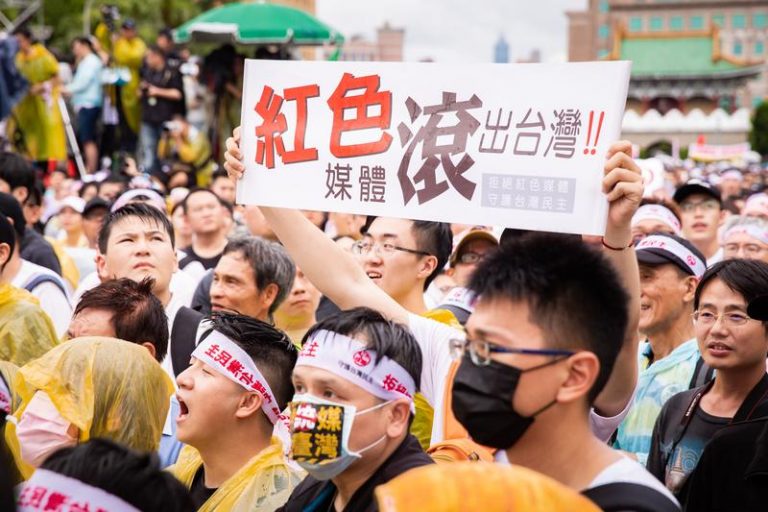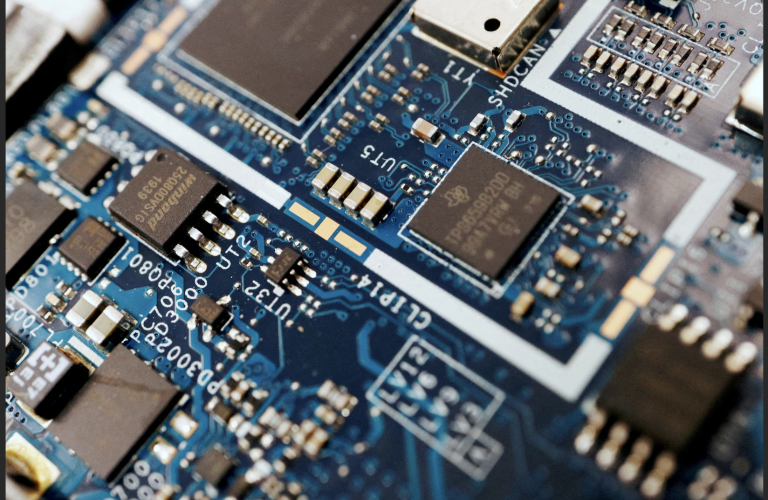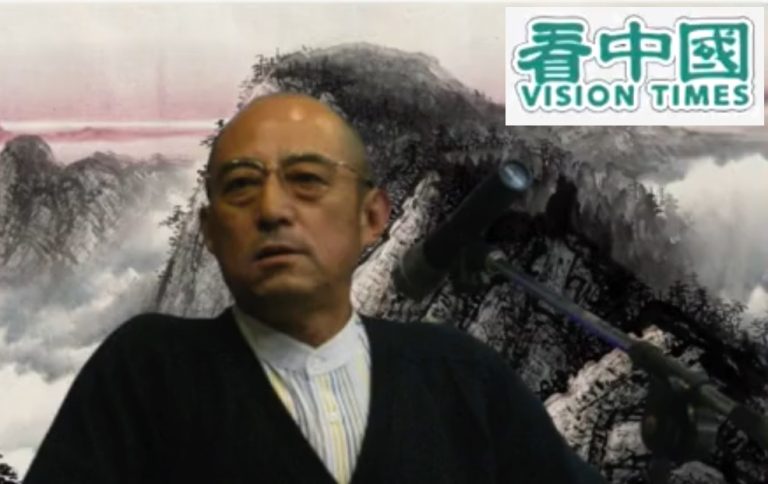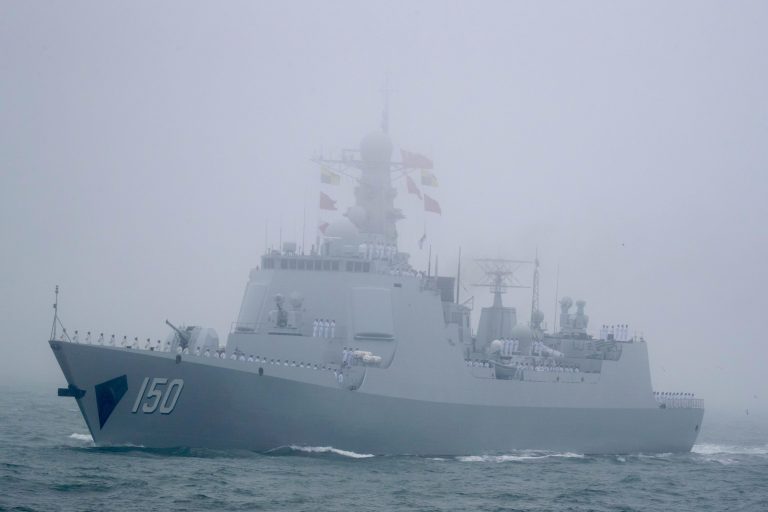Months ahead of the 2020 presidential elections in Taiwan, the issue of relations with mainland China looms large in public discourse, especially as Hong Kong simmers with unrest over the Chinese Communist Party’s continued disregard for the autonomous city’s rule of law and public demands.
Taiwan is currently run by President Tsai Ing-wen of the pan-Green coalition’s Democratic Progressive Party. The DPP favors eventual independence for Taiwan, while the Nationalist Party (Kuomintang), which heads the Blue camp, used to govern mainland China before losing it to the communists in 1949. As such, it continues to seek some form of reunification.
According to Ming Chu-cheng, professor emeritus of National Taiwan University’s political science department, the CCP is playing not just the pan-Blue coalition, which many Taiwanese have increasingly come to view as an agent of Beijing, but is infiltrating the whole spectrum of Taiwanese politics to sow discord and paralyze the island’s authorities.
“The first thing the CCP does is to draw a divide between Blue and Green,” said Ming, speaking to New Tang Dynasty Television (NTDTV). “After fomenting this division, they first roped in the Blue [Kuomintang] to fight the Green.”

Professor emeritus Ming Chu-cheng, of National Taiwan University, believes that political division in Taiwan only helps the Chinese Communist Party achieve its goal of bringing the island under its influence. (Image: via Central News Agency)
The conflicts between the two camps have been a source of intense polarization in Taiwan. In 2014, anger over the Kuomintang’s conciliatory policies toward mainland China resulted in the Sunflower Movement, in which young protesters occupied the legislature; two years later, Tsai was elected and sworn in as Taiwan’s first woman president.
Success
You are now signed up for our newsletter
Success
Check your email to complete sign up
Ming continued, saying that not only did the CCP ally with its old archnemesis, the Kuomintang, to fight pro-independence forces, but it also infiltrated the Kuomintang, Taiwanese society, and even the opposition DPP to ensure more conflict between both parties.
“What’s the benefit of having them fight it out? The first benefit is, you won’t unite to deal with me [the CCP threat]; the second benefit is, your resources will be expended in the struggle,” Ming said, referring to both parties.
Third, Ming said, having Taiwan bogged down in partisan conflict can serve to make a case for Communist Party propaganda, which argues that democracy has brought chaos to Taiwan.
“Everyone looks at how lots of people from the Blue camp go to the mainland to do business; they’ve been bought off by mainland China. But have you noticed that when the Blues were in office, many in the Green camp also went to the mainland for business?” Ming said. “So no matter Blue or Green, they’ve both been infiltrated and bought off by the CCP.
Camouflaged subversion
According to Ming, the CCP uses this influence to have politicians support the CCP on the one hand, while having others create intense political conflicts. However, few officials or activists address the underlying problem, which is that of the Communist Party’s dictatorship and its highly intricate strategies to subvert non-communist societies.
For example, according to a report by the South China Morning Post (SCMP), the newly victorious Kuomintang candidate for the 2020 presidential election, Han Kuo-yu, is a divisive figure who is barely accepted within his own party.

Han Kuo-yu, now presidential candidate for Taiwan’s Kuomintang, answers questions about his trip to Hong Kong and mainland China. (Image: YouTube / Screenshot)
Han, who is currently mayor of the southern Taiwanese city of Kaohsiung, aroused controversy for claiming lack of knowledge about the 2-million-strong protests in Hong Kong when asked by a reporter, and also for meeting with CCP officials responsible for enforcing Beijing’s policies in the former British colony when he recently visited Hong Kong.
According to SCMP, Han “appears to be a favourite of Beijing, which after years of failed efforts to advance its political objectives towards Taiwan with mainstream counterparts in Taipei, now sees an opportunity to make progress on cross-strait relations with outlier politicians who are less inclined to toe the party line — and who may in fact feel less constrained by democratic rules.”
On June 23, tens of thousands of people marched in Taipei, the capital, to protest the influence of pro-communist “red media.” Many reports have highlighted similar concerns about the CCP’s infiltration, be it in media, government, or education.

Tens of thousands of Taiwanese joined a rally against pro-Beijing Taiwanese media on Ketagalan Boulevard in front of the presidential office building in Taipei, Taiwan, on June 23, 2019. The subject of the rally was rejecting red (CCP infiltrated) media and safeguarding the nation’s democracy. (Image: The Epoch Times)
The enemy is neither blue nor green, but red
In his interview with NTDTV, Prof. Ming continued to describe the “ultimate logic” of the Communist Party’s subversion: “When things get even more extreme, when you are fighting each other … it’s certain that when you guys, blue and green, are locked in struggle, you can’t deal with me [the CCP].”
The Communist Party has decades of experience with so-called “united front” work, whereby it wins over people and organizations not under its control by selectively pandering to their interests. Over time, it can reel in its targets by creating discord in the broader political environment and by focusing attention away from itself.
During the Chinese Civil War (1945-1949), which the Kuomintang lost, the CCP won over many Kuomintang personnel, in addition to ordinary Chinese, by using such united front tactics.
“So that is to say, if you don’t understand the CCP, you can only see one side of the matter; if you understand the CCP, then you see both sides. I often remind my friends in the Blue camp, who do you think your enemy is? They say it’s the Greens; I say, no, I say your enemy is red. Now for the Greens, who is your enemy? The Blues? I say no, your true enemy is red,” Ming warned.
He continued: “I say that all of you, Blue and Green, you are rivals within the system of constitutional government. But the reds, they are the enemy beyond that system.”
Follow us on Twitter or subscribe to our weekly email













